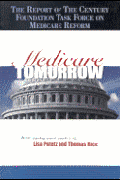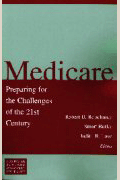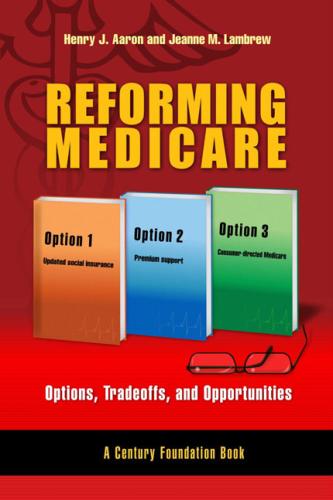Studies in this week’s Hutchins Roundup find that, even with Medicare, people incur an average of $122,000 in medical expenses after the age of 70, financial frictions may be hindering the development of novel drugs, and more.
Want to receive the Hutchins Roundup as an email? Sign up here to get it in your inbox every Thursday.
Even with Medicare, people incur an average of $122,000 in medical expenses after the age of 70
Although almost all elderly Americans are enrolled in Medicare, they still face the risk of catastrophic health care expenses. John Bailey Jones of the Federal Reserve Bank of Richmond and co-authors use data from the Health and Retirement Survey and the Medicare Current Beneficiary Survey to estimate medical expenses that are not covered by Medicare for people over the age of 70. They find that, between age 70 and the end of their lives, people incur an average of $122,000 in medical costs that are paid out-of-pocket, by private insurers or by the state-federal Medicaid program. Five percent of people incur more than $300,000 in expenses, and one percent incur more than $600,000. Lifetime medical costs are partially determined by marital status, health at age 70, and personal income, they say, but a large part of the variation is determined by luck. The authors find that Medicaid is an important source of insurance for these costs, lowering lifetime out-of-pocket costs by 20 percent on average. For the poorest households, Medicaid covers the majority of medical costs not covered by Medicare. Medicaid also reduces the level and volatility of medical spending of high-income households, but to a much lesser extent.
Financial frictions may be hindering the development of novel drugs
Joshua L. Krieger of Harvard, Danielle Li of MIT, and Dimistric Papanikolaou of Northwestern construct a new measure to identify truly novel drugs by comparing their chemical structures to previously developed drugs, and document a decline in the innovativeness of new drugs over time. In fact, the proportion of “me too” drugs (those with chemical structures structure similar to older drugs) doubled from 1999 to 2014, they find. Novel drugs that get FDA approval are more profitable than “me too” drugs, but investing in them is riskier because they are less likely to win FDA approval. The boost to drug makers’ expected cash flow from the expansion of Medicare drug coverage led drug makers to pursue more novel drug candidates, the authors find. They conclude that pharmaceutical firms view novel drugs as better investments than “me too” drugs, but financial frictions discourage them from investing optimally.
Increases in exports boosts patenting for the most productive firms, lowers patenting for the least productive firms
Philippe Aghion of the Collège de France and co-authors identify two effects from an increase in demand for a nation’s exports. On the one hand, an increase in demand enlarges the market and thus increases the incentives for firms to innovate. On the other, it increases competition, and thus reduces profits so firms have less to spend on innovation. In general, they say, export growth and innovation are correlated across firms. Using firm-level data on productivity, trade and patenting of all French manufacturers from 1994 to 2012, they find that an increase in exports leads the most productive firms to produce more patents but the least productive firms to produce fewer. Increased competition has a large impact on less productive firms, while more productive firms are able to take advantage of increased demand, they argue.
Chart of the week: Per capita pharmaceutical spending has increased at a much faster pace in the United States than in other countries

Quote of the week:
“Although the Eurosystem has been charging an annual interest rate of negative 0.4 percent on banks’ excess reserves for more than two years now, almost no euro area banks have passed these negative rates on to their household clients. In some jurisdictions this is due to legal impediments, but in most cases it simply reflects banks’ long-run perspective – that is their efforts to maintain a sustainable source of profit and, hence, a stable deposit base. This rigidity does not only blur the transmission of our policy rates. Empirical evidence suggests that it also weakens the bank lending channel,” says Benoît Cœuré, member of the executive board of the European Central Bank.
“An interest-bearing central bank digital currency may help overcome these constraints. This does not actually require cash to be abolished, but rather that it no longer acts as an effective competitor for large transactions. Under these conditions the central bank could gain greater control over the transmission of interest rates to households and businesses. In a deep recession, it could reduce interest rates by more than is currently possible and stabilize economic activity more quickly, reducing the need for other non-conventional measures. And in an upswing, the ability to pay positive interest rates on digital currency would put increased upward pressure on deposit rates provided by banks.”









Commentary
Hutchins Roundup: Medical expenses at older ages, pharmaceutical innovation, and more
May 17, 2018